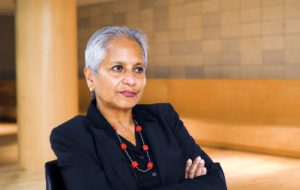This is what Shanghai foodies crave
A The China Project guide to the hottest items on the menu in Shanghai.

China is a food-crazed country, and the metropolis of Shanghai is a great place to dine out. The city’s most fashionable foods are often, like its architecture, a cosmopolitan blend of tradition and modernity, East and West, including everything from street food vendors in alleyways to Michelin-starred restaurants lining the Bund.
Below is a list we’ve curated of the city’s latest food fads that our foodie friends in Shanghai have told us about:
Cheese tea (芝士拼茶 zhīshì pīn chá)
Drinking pure tea may still appeal to the older generations in China, but it’s becoming increasingly unattractive to many millennials who now comprise the major force in the country’s beverage consumption. For a time, bubble milk tea — with its mellow, sweet, and milky flavor — was seen as the contemporary tea drink of choice, but we’ve now entered the era of cheese tea.
As you may infer from its name, cheese tea is a fusion of two completely incongruous ingredients and cultures. Traditionally, Chinese people don’t take well to cheese. (Most Chinese have been found to be lactose intolerant.) But Shanghainese seem to have found a taste for fragrant teas with a cheese-based foam topping.
One brand leading the trend is HEEKCAA 喜茶. Expanding from its original tiny venue in Jiangmen, Guangdong Province, HEEKCAA now owns more than 50 chain stores across the country. In early February, it finally arrived in Shanghai, and its name instantly entered into every conversation of the city’s foodie circles. It doesn’t matter what time of day or how poor the weather, you can find lines of Shanghainese waiting, sometimes for as much as three hours, to sip the drink that everyone’s talking about.

Crayfish (小龙虾 xiǎo lóngxiā)
As the weather warms, there is no better way to cool down on a fierce summer night than by drinking an icy beer while savoring some bright red crayfish — arguably the most popular seafood during the Shanghai summer.

People are divided on the exact English translation of xiao longxia. But whether it’s called crayfish, crawfish, or “baby lobster,” the popularity of the dish is undeniable. In summer, vendors appear across the city with stacks of crayfish. Even with widely circulated rumors that the creatures only live in polluted waters and are exposed to garbage as they grow up, Shanghai still reportedly consumes a staggering 15,000 tons of crayfish every year.
Over the years, many restaurants have developed their own special techniques to cook crayfish. Among dozens of distinctive flavors, two stand out: crayfish cooked with spicy Sichuan peppercorns and chilies (香辣小龙虾 xiānglà xiǎo lóngxiā) and crayfish cooked with 13 different kinds of spices and herbs (十三香小龙虾 shísān xiāng xiǎo lóngxiā).
Bullfrog noodles (牛蛙面 niúwā miàn)
These are noodles with a sauce that contains meat from bullfrogs, and a bowl of them costs about 30 yuan ($4.36). The best place in Shanghai to have this dish is Haling Noodle House 哈灵面馆. In the Shanghai dialect, haling literally means “so good.” This small noodle restaurant opened more than 30 years ago and has endeared itself to generations of Shanghainese. Though a wide variety of noodle soups are offered in Haling, the main attraction is, undoubtedly, bullfrog noodles. Made from two or three entire bullfrogs, wheat noodles, and some green peppers, the soup is mildly spicy.
 Qingtuan with salty meat floss inside (肉松青团 ròusōng qīng tuán)
Qingtuan with salty meat floss inside (肉松青团 ròusōng qīng tuán)
This year’s Qingming Festival concluded a couple of weeks ago, but the craze for qingtuan (青团 qīng tuán) — a traditional green snack exclusive to the festival season — has yet to fade.
The tradition of eating qingtuan during the Qingming Festival can be traced back to the Zhou dynasty (1046–256 B.C.E.), but the recipe has not evolved very much until recently. By strict definition, qingtuan is made of glutinous rice mixed with mugwort or barley grass, and filled with sweet red or black bean paste. These days, various kinds of qingtuan featuring diverse flavors are available. Last year, Xinghualou 杏花楼, a Shanghai local food brand, reintroduced the snack by filling the inside with meat floss — a kind of finely shredded pork jerky — instead of the traditional sweet filling. The new variation became so popular that patrons scheduled their entire day around the queue to get some. This year, though the craze has diminished slightly, the wait can still be two or three hours on a weekday.


Ada Scallion Pancake (阿大葱油饼 Āh dà cōng yóubǐng)
If you want to have a bite of a scallion pancake, a common breakfast item in Shanghai, you can find any random street vendor to quickly make one for you. But if you won’t settle for anything but the city’s best, be prepared to arrive at Ah Da Scallion Pancake before 6 a.m., and you’ll still likely face a 45-minute wait.
Wu Gencun 吴根存, the store’s owner (his nickname is Ah Da 阿大), has been making scallion pancakes for more than three decades. Despite his physical stature — his back is bowed over in a severe hunch — Wu wakes up at 5 a.m. every morning to serve his hungry customers (originally through the back door of his house). While his competitors have tried to attract patrons with new toppings or their special house sauces, Wu keeps his products as simple and original as he can.
Ah Da was featured in the BBC documentary Taste of Shanghai last year, in which the British celebrity chef Rick Stein praises the pancakes’ “wonderful” smell and “fabulous” taste. However, last September, shortly after the film was shot, Wu was asked to temporarily suspend his business for lacking a proper license. Local foodies were upset for a month, but to their great joy, Ah Da returned with a new license and a “real” shop as opposed to his old stall.








